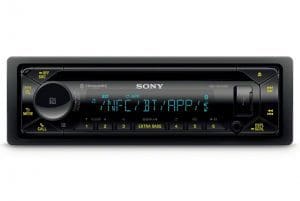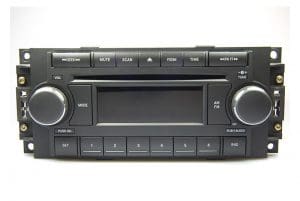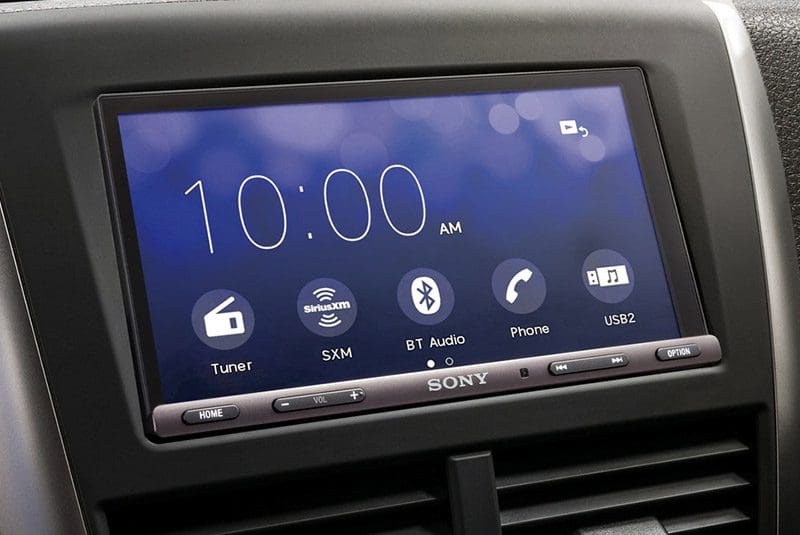If you go shopping for a new radio for your car or truck, the Product Specialist may use the term DIN or double-DIN to describe the size of the radio. DIN is short for Deutsches Institut für Normung, which translates to mean German Institute for Standardization.
The goal in the creation of this standard was to develop a radio chassis size that would be common across a wide variety of vehicles. The standard for car radio sizing was established in 1984 under DIN 75490. This standard was later updated to ISO 7736. ISO refers to the International Organization for Standardization, a Geneva, Switzerland-based non-governmental standards organization.
How Big is a DIN Radio?
 The original standard is 180 mm wide by 50 mm tall and uses metric dimensions because it is an international standard. The standard does not include a maximum or minimum depth and as such, not every radio fits in every vehicle. But don’t fret — your installer knows what will fit in your application. If you look up the dimensions of most radio chassis, you’ll find they are around 178 mm by 50 mm.
The original standard is 180 mm wide by 50 mm tall and uses metric dimensions because it is an international standard. The standard does not include a maximum or minimum depth and as such, not every radio fits in every vehicle. But don’t fret — your installer knows what will fit in your application. If you look up the dimensions of most radio chassis, you’ll find they are around 178 mm by 50 mm.
The double-DIN (also called 2-DIN) standard implies that a unit has double the height of a standard DIN radio at 180 by 100 mm, or roughly 7 by 4 inches.
Did you want to talk about the hundreds of sizes of twin-shaft radios? Nah, neither do we.
What Size is My Radio?
 Different vehicles have different mounting provisions and often, different trim panel dimensions. Take, for example, General Motors and Chrysler vehicles through the ’80s and ’90s. These radios were wider than the DIN standard at 8 to 8.5 inches and measured roughly 3 inches in height. Companies like Metra, Best Kits and Scosche make adapter plates that allow your installer to mount a standard single-DIN radio in these openings.
Different vehicles have different mounting provisions and often, different trim panel dimensions. Take, for example, General Motors and Chrysler vehicles through the ’80s and ’90s. These radios were wider than the DIN standard at 8 to 8.5 inches and measured roughly 3 inches in height. Companies like Metra, Best Kits and Scosche make adapter plates that allow your installer to mount a standard single-DIN radio in these openings.
Many Japanese vehicles in this same time period offered what was a referred to (probably incorrectly) as an ISO DIN mounting solution. The width and height of the radios in these vehicles match the DIN standard, but the face of the radio was the same, not allowing for use of the plastic trim rings that come with an aftermarket single-DIN CD or multimedia receiver. ISO DIN installations used metal brackets that bolt to the sides of the radio and, back when pull-out radios were popular, prevented them from being removed. Oh, how times have changed.
Upgrade Your Car Radio Today!
If you have an older vehicle, upgrading its technology can make your next trip or drive to work safer and certainly more entertaining. With features like Apple CarPlay, Android Auto, Bluetooth audio streaming, MP3 and FLAC file playback and built-in navigation, you can modernize your ride for a very reasonable investment. Drop by your local mobile enhancement retailer to find out what’s available for your car, truck or SUV.

